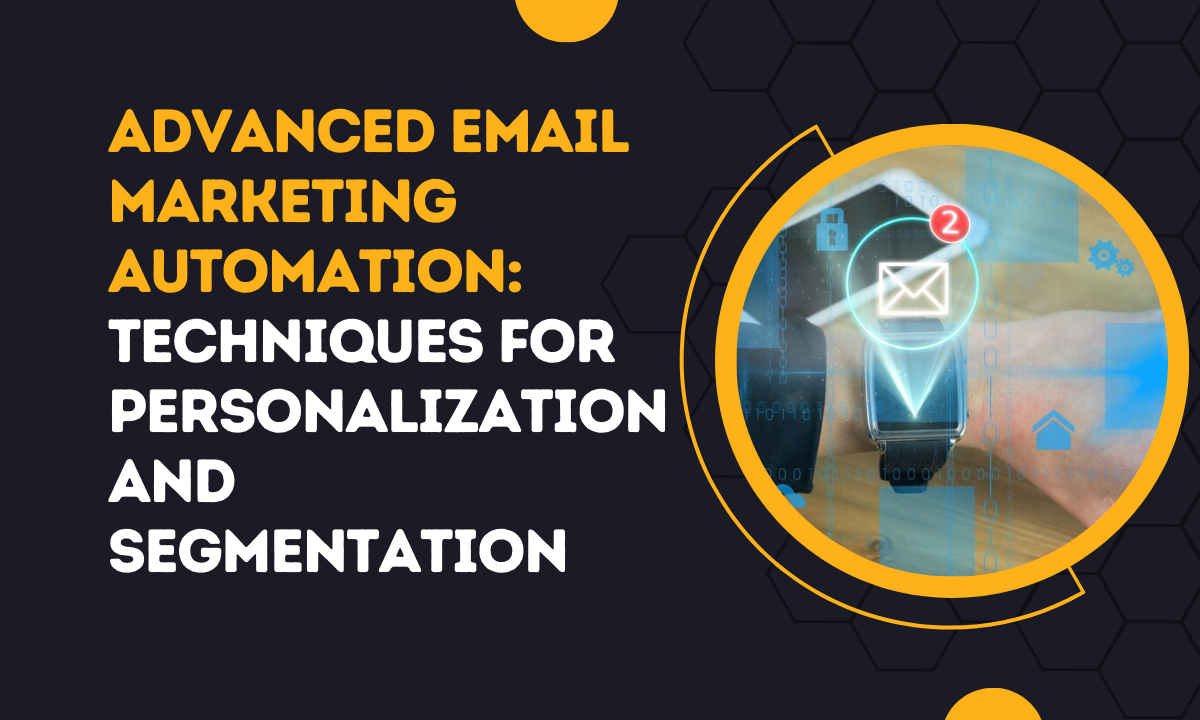Advanced Email Marketing Automation: Techniques for Personalization and Segmentation
Email marketing is undergoing a massive shift toward automation, currently. For instance, have you ever received an email that felt like it was tailor-made just for you? Perhaps it greeted you by name, recommended products based on your past purchases. Or even reminded you of items left lingering in your online shopping cart.
In the world of email marketing, personalization and segmentation have become the holy grail for marketers seeking to connect with their audience on a deeper level.
Consider this: according to a study by Campaign Monitor, emails with personalized subject lines are 26% more likely to be opened. Moreover, another research reveals that segmented email campaigns result in a whopping 760% increase in revenue.
These staggering statistics underscore the undeniable impact that advanced email marketing automation techniques can have on engagement and conversion rates.
But what exactly does it take to achieve such remarkable results?
In this article, we delve into the realm of advanced email marketing automation. We will also explore the intricate techniques of personalization and segmentation.
1. Understanding Personalization and Segmentation
Personalization involves customizing the content of your emails to suit the individual preferences, behaviors, and characteristics of each recipient.
It can include addressing recipients by their first name.
Or it can recommend products based on past purchases, or sending targeted content based on their interests or browsing history.
Segmentation, on the other hand, involves dividing your email list into distinct groups or segments. Usually you base them on shared characteristics or behaviors.
These segments could be based on demographic factors such as age, gender, or location. They could also be behavioral factors like past purchase history, engagement with previous emails, or website interactions.
1.1. Benefits of Personalization and Segmentation:
- Improved Engagement: Personalized emails are more likely to capture the attention of recipients and encourage them to open, read, and interact with your content.
- Higher Conversion Rates: When you deliver content that speaks directly to the needs and interests of your audience, you’re more likely to see an increase in conversion rates.
- Enhanced Customer Relationships: By demonstrating that you understand and value your customers’ preferences and needs, personalized and segmented emails can help strengthen your relationships with them.
- Optimized Campaign Performance: Personalization and segmentation allow you to refine your email marketing strategies based on real-time data and insights.
In essence, personalization and segmentation empower you to deliver targeted, relevant, and timely content. It’s essentially content that resonates with your audience, driving engagement, and conversions.
It’s what ultimately invites business success.
2. Data Collection and Analysis
In the realm of email marketing, data is the cornerstone of effective personalization and segmentation strategies.
The ability to collect, and leverage data allows marketers to tailor their email campaigns to the unique preferences of individual recipients. There could also be email campaigns according to audience behaviors.
Eventually you have a potent tool for driving higher engagement and conversion rates.
2.2. Data Collection is Essential for:
- Understanding Your Audience: By gathering data about your audience’s demographics, preferences, and behaviors, you gain a deeper understanding of who they are and what they’re interested in. It allows you to create more relevant and targeted email campaigns that resonate with your audience on a personal level.
- Creating Segmentation Criteria: Data collection enables you to segment your email list based on shared characteristics or behaviors. It could be, dividing your audience by age, location, or purchase history. Engagement levels also are one of the factors for segmentation. The end result is that it helps you deliver more targeted and tailored content to each group. As a result the likelihood of engagement and conversion increases.
- Personalizing Content: The data you collect serves as the foundation for personalization efforts in your email campaigns. Whether it’s addressing recipients by their first name, recommending products based on past purchases, or sending targeted content based on their interests, personalization helps you deliver a more personalized and relevant experience to each recipient.
2.3. Methods and Tools for Data Collection:
There are various methods and tools available for collecting relevant data for email marketing purposes:
- Website Analytics: Tools like Google Analytics provide valuable insights into how visitors interact with your website, including pages visited, time spent on the site, and conversion metrics.
- Customer Relationship Management (CRM) Systems: CRM systems like Salesforce, HubSpot, or Mailchimp allow you to track and manage customer data, including contact information, purchase history, and interaction history.
- Email Marketing Platforms: Email marketing platforms often offer built-in tools for tracking email engagement metrics, such as open rates, click-through rates, and conversion rates.
- Surveys and Feedback Forms: Collecting feedback from your audience through surveys or feedback forms can provide valuable insights into their preferences, interests, and needs.
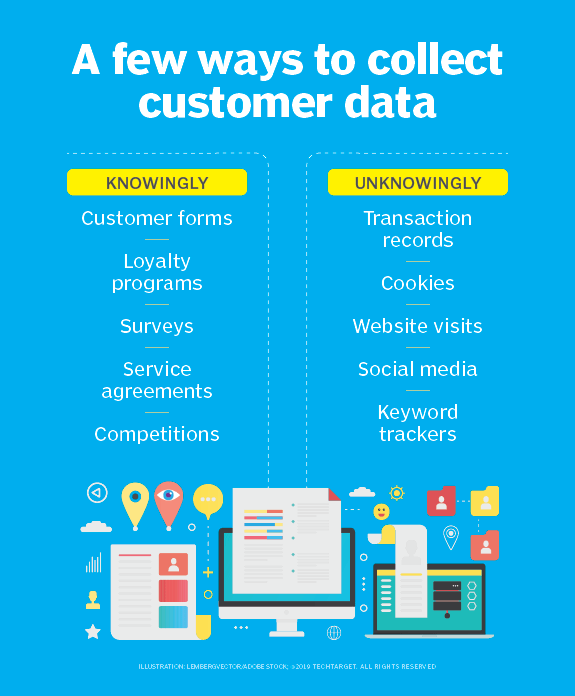
2.4. Significance of Data Analysis:
Once you’ve collected data, the next step is to analyze it to gain actionable insights into customer behavior and preferences. Data analysis allows you to:
- Identify Patterns and Trends: By analyzing data, you can identify patterns and trends in customer behavior, such as common purchasing patterns, preferred communication channels, or peak engagement times.
- Refine Segmentation Criteria: Data analysis helps you refine your segmentation criteria by identifying relevant factors that differentiate between different segments of your audience.
- Optimize Personalization Efforts: By analyzing data, you can identify opportunities for personalization and tailor your email campaigns to better meet the needs and preferences of your audience.
By leveraging data effectively, marketers can deliver more relevant, targeted, and personalized experiences to their audience, ultimately driving higher engagement and conversion rates.
3. Advanced Personalization Techniques
In the ever-evolving landscape of email marketing, advanced personalization techniques have emerged as game-changers, allowing marketers to create highly tailored and relevant experiences for their audience.
Here, we delve into three advanced personalization techniques: dynamic content insertion, behavioral triggers, and predictive personalization.
3.1. Dynamic Content Insertion:
Dynamic content insertion involves the customization of email content based on individual user data, resulting in hyper-personalized messages that resonate with each recipient on a deeper level. Here’s how it works:
- Segmentation and Data Mapping: Begin by segmenting your email list based on relevant criteria such as demographics, purchase history, or engagement level. Then, map out the specific data points associated with each segment.
- Content Variation: Create multiple versions of your email content, each tailored to different segments of your audience. It could include variations in product recommendations, messaging tone, or promotional offers.
- Merge Tags and Dynamic Variables: Utilize merge tags or dynamic variables within your email marketing platform to dynamically insert personalized content based on the recipient’s data.
- Testing and optimization: Continuously monitor the performance of your dynamic content campaigns and leverage A/B testing to optimize for maximum engagement and conversion rates.
Analyze the data to identify patterns and insights that can inform future personalization efforts.
3.2. Behavioral Triggers:
Behavioral triggers leverage user actions or interactions to automatically trigger personalized email messages, delivering timely and relevant content based on the recipient’s behavior. Here’s how it works:
- Identify Trigger Events: Determine the key actions or events that indicate user intent or interest, such as website visits, product views, cart abandonment, or email opens/clicks.
- Create Triggered Email Flows: Develop automated email workflows triggered by specific user actions. For example, if a user abandons their shopping cart, automatically send a follow-up email reminding them to complete their purchase or offering a discount code to incentivize conversion.
- Personalize Content and Messaging: Tailor the content and messaging of your triggered emails based on the user’s behavior.
- Monitor and Iterate: Continuously monitor the performance of your behavioral trigger campaigns, analyzing metrics such as open rates, click-through rates, and conversion rates.
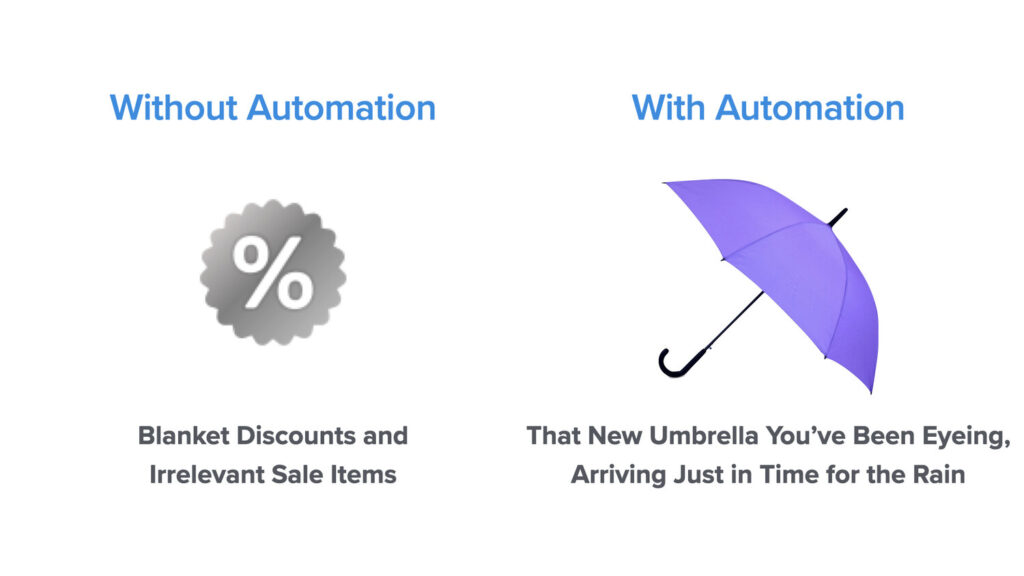
Use this data to refine your triggers and optimize the relevance and effectiveness of your automated email workflows.
3.3. Predictive Personalization
Predictive personalization harnesses the power of machine learning algorithms to anticipate user preferences and behavior, enabling marketers to proactively deliver personalized content and recommendations. Here’s how it works:
- Data Collection and Analysis: Collect and analyze vast amounts of user data from various sources, including website interactions, past purchase history, demographic information, and email engagement metrics.
- Machine Learning Algorithms: Utilize machine learning algorithms to identify patterns, trends, and correlations within the data, allowing you to predict future user behavior and preferences.
- Personalized Recommendations: Leverage predictive analytics to generate personalized product recommendations, content suggestions, or promotional offers tailored to each user’s interests and needs.
- Dynamic Content Generation: Automatically generate dynamic content variations based on predictive insights, ensuring that each email message is highly relevant and resonates with the recipient.
- Iterative Improvement: Continuously refine your predictive models based on real-time data feedback, adjusting algorithms and strategies to improve accuracy and relevance over time.
By leveraging data, automation, and machine learning, marketers can deliver personalized messages that resonate with their audience on a profound level, fostering stronger relationships and driving business growth.
Check out my article to get some quick tips on connecting with your audience through email marketing.
4. Segmentation Strategies
Segmentation is dividing your email list into distinct groups or segments based on shared characteristics or behaviors. By segmenting your audience, you can deliver more targeted and relevant email campaigns that resonate with each group.
Here, we explore three key segmentation strategies: demographic segmentation, behavioral segmentation, and psychographic segmentation.
4.1. Demographic Segmentation:
Demographic segmentation involves dividing your email list based on demographic factors such as age, gender, location, income level, education, etc. Here’s how to segment your list using demographic criteria:
- Collect Relevant Data: Gather demographic information from your subscribers through sign-up forms, preference centers, or customer profiles. Common data points include age, gender, location, and job title.
- Use Email Marketing Platform Features: Most email marketing platforms offer built-in tools for segmenting your audience based on demographic data. Utilize these features to create targeted campaigns tailored to specific demographics.
- Tailor Content and Messaging: Customize your email content and messaging to resonate with each demographic segment. For example, you might use language and imagery that appeals to a younger audience or highlight products relevant to a specific location.
- Optimize Timing and Frequency: Consider demographic factors such as time zone and lifestyle preferences when scheduling your email sends. Adjust the frequency of your emails based on the preferences of each demographic segment.

4.2. Behavioral Segmentation:
Behavioral segmentation involves segmenting users based on their interactions with your website, past purchases, email engagement, and other behavioral indicators. Here’s how to segment your list using behavioral criteria:
- Track User Interactions: Use tracking tools such as website analytics, email engagement metrics, and purchase history data to monitor user behavior. Identify key actions such as website visits, product views, email opens, and purchases.
- Define Trigger Events: Determine specific behavioral triggers that indicate user intent or interest, such as cart abandonment, product browsing, or email engagement. These triggers will serve as the basis for your segmented email campaigns.
- Automate Triggered Emails: Set up automated email workflows triggered by specific user actions. For example, send a follow-up email to users who abandon their shopping cart or send a targeted offer to users who have demonstrated interest in a particular product category.
- Personalize Content and Offers: Tailor the content and offers in your emails based on each user’s behavior. Provide product recommendations related to past purchases, offer discounts on items they’ve shown interest in, or send relevant content based on their browsing history.
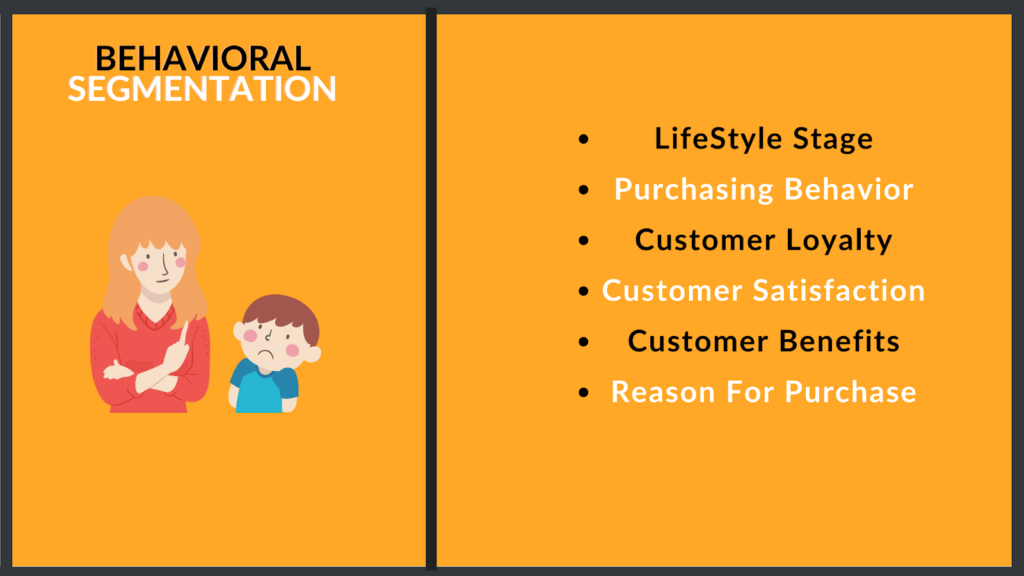
4.3. Psychographic Segmentation:
Psychographic segmentation involves segmenting users based on psychological factors such as interests, values, attitudes, and lifestyle preferences. Here’s how to segment your list using psychographic criteria:
- Conduct Audience Research: Use surveys, interviews, and social listening tools to gather insights into your audience’s interests, values, and lifestyle preferences. Identify common themes and patterns that can inform your segmentation strategy.
- Create Persona Profiles: Develop detailed persona profiles representing different segments of your audience based on psychographic factors. Consider factors such as hobbies, interests, attitudes, and values when defining these personas.
- Tailor Content and Messaging: Craft email content and messaging that resonates with each psychographic segment. Speak to their unique interests, values, and aspirations, and demonstrate an understanding of their lifestyle preferences.
- Engage with Relevant Content: Deliver content and offers that align with the interests and preferences of each psychographic segment. Whether it’s providing educational resources, showcasing lifestyle-related products, or promoting community events, ensure that your emails are relevant and compelling to each audience segment.

By segmenting your list based on demographic, behavioral, and psychographic factors, you can deliver more targeted, relevant, and engaging email campaigns that drive higher engagement and conversion rates.
5. Automation Workflows
5.1. Introduction to Automation Workflows in Email Marketing:
Automation workflows automate the sending of emails based on predefined triggers, actions, or conditions. Instead of manually sending individual emails, these workflows allow marketers to create sequences of automated emails that are triggered by specific events or user behavior.
It saves time and effort and ensures that subscribers receive relevant content at the right time, leading to higher engagement and conversions.
5.2. Tips for Creating Effective Automation Workflows
- Set Clear Goals: Define the objectives of your automation workflows, whether it’s to welcome new subscribers, nurture leads, or re-engage inactive subscribers. Align your workflow strategy with these goals to ensure effectiveness.
- Segment Your Audience: Segment your email list based on relevant criteria such as demographics, behavior, or interests. It allows you to deliver more targeted and personalized content to each segment, increasing engagement and conversion rates.
- Map Out the Customer Journey: Map out the customer journey and identify key touchpoints where automation workflows can be implemented to deliver timely and relevant content.
- Personalize Content and Messaging: Leverage personalization techniques such as dynamic content insertion, merge tags, and personalized recommendations to tailor your emails to each recipient.
- Test and Iterate: Continuously monitor the performance of your automation workflows and A/B test different elements such as subject lines, content, and send times. Use the insights gained from testing to optimize your workflows for better results over time.
By implementing advanced automation workflows for personalization and segmentation and following best practices for effectiveness, marketers can drive higher engagement, conversions, and business growth.
6. Testing and Optimization in Email Marketing Automation
Testing and optimization are essential components of effective email marketing automation, allowing marketers to refine their strategies, improve engagement, and drive better results.
Here’s a breakdown of the importance of A/B testing strategies.
6.1. The Importance of A/B Testing in Email Marketing Automation:
A/B testing, also known as split testing, involves comparing two versions of an email or element within an email to determine which performs better in terms of engagement metrics. Here’s why A/B testing is crucial in email marketing automation:
- Data-Driven Decision Making: A/B testing provides empirical data on the effectiveness of different email elements. It allows marketers to make informed decisions based on real-world performance. In fact, there are assumptions or interpretations involved..
- Continuous Improvement: By testing different variations of your emails, you can identify what resonates most with your audience and iterate on your strategies to continuously improve performance over time.
- Optimization of Conversion Rates: A/B testing enables you to optimize conversion rates by identifying and implementing changes that lead to higher engagement and conversions, ultimately maximizing the ROI of your email marketing efforts.
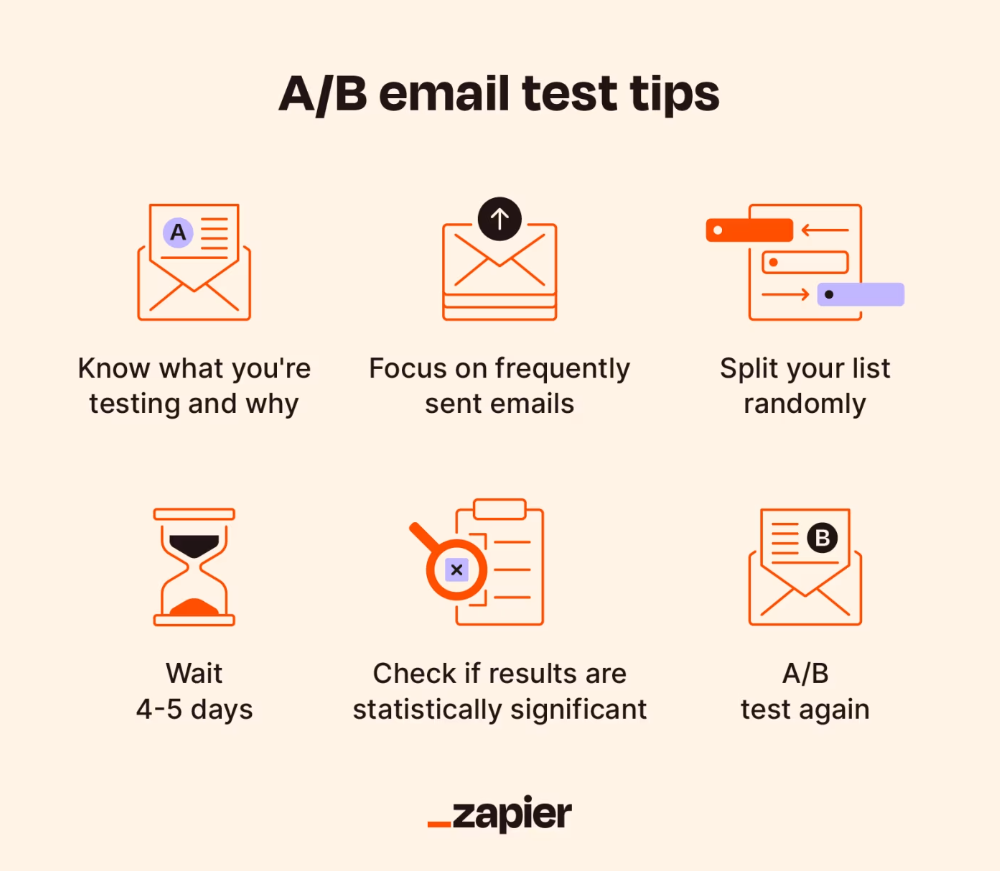
6.2. Strategies for Testing Personalized Content and Segmented Email Campaigns:
When testing personalized content and segmented email campaigns, it’s essential to focus on elements that can be customized. Here are some strategies for effective testing:
- Subject Lines and Preheaders: Test different variations of subject lines and preheaders to determine which ones resonate best with your audience and encourage higher open rates.
- Content and Messaging: Experiment with different content formats, messaging tones, and personalized elements, such as product recommendations or dynamic content insertion, to identify what drives the most engagement and conversions.
- Call-to-Action (CTA): Test different CTAs, including wording, design, placement, and color, to optimize click-through rates and encourage desired actions from your audience.
- Timing and Frequency: Test the timing and frequency of your email sends to determine the optimal schedule for maximum engagement without overwhelming subscribers.
6.3. How to Use Data Insights to Optimize Your Email Marketing Automation Efforts:
Data insights play a crucial role in optimizing email marketing automation efforts.
Here’s how to leverage data insights effectively:
- Track Key Metrics: Monitor key metrics such as open rates, click-through rates, conversion rates, and unsubscribe rates to gauge the effectiveness of your automation workflows and identify areas for improvement.
- Segmentation Analysis: Analyze the performance of different audience segments to identify which segments respond best to your campaigns and tailor your automation workflows accordingly.
- Behavioral Analysis: Use behavioral data to understand how users interact with your emails and website, identify patterns and trends, and optimize your automation workflows to better meet the needs and preferences of your audience.
- A/B Testing Insights: Incorporate insights from A/B testing experiments into your optimization efforts, leveraging successful variations to inform future campaigns and refine your automation strategies.
FAQs
1. Why is data collection important for automation in email marketing ?
Data collection is critical for automation in email marketing since it enables tailored communication, targeted campaigns, and performance analysis. Automation technologies help improve conversion rates and ROI. They do this by gathering insights into subscriber behavior, preferences, and engagement metrics. And in the end, they deliver relevant content to the right audience at the right time.
2. How do email marketers do Segmentation and Data Mapping?
Email marketers conduct segmentation by categorizing subscribers based on demographics, behaviors, or preferences. Data mapping involves organizing collected information into a structured format for targeted campaigns. Marketers utilize tools like CRM systems to analyze and segment data effectively, ensuring personalized communication and improved engagement.
3. What is the best way to carry out behavioral segmentation?
The best way to carry out behavioral segmentation is to track user interactions, define trigger events, automate triggered emails, and personalize content and offers based on their behavior, using tools like website analytics and email engagement metrics. This ensures targeted and relevant communication, improving engagement and conversions.
4. Why is A/B testing so important for automation in email marketing?
A/B testing is crucial in email marketing automation as it allows marketers to experiment with different variables like subject lines, content, and send times to optimize performance. By analyzing results, they can refine strategies, improve engagement, and achieve higher conversion rates efficiently.
Related Posts
Navigating the World of Affiliate Marketing for Bloggers
Affiliate Marketing Mistakes to Avoid: Tips from Successful Affiliates
Deep Dive into Affiliate Tracking: Understanding Cookies, Pixels, and Attribution Models
The Role of AI and Machine Learning in Affiliate Marketing: Automation and Personalization
Conclusion
As you embark on your journey to elevate your email marketing efforts, remember this:
The key lies in understanding your audience, leveraging data insights, and embracing automation. All this is aimed at enhancing rather than replacing human connection.
So, dare to push the boundaries. Experiment boldly, and get on the road toward mastering advanced email marketing automation.
The future of your email campaigns is based on the relationships they cultivate with your audience. And with that come endless possibilities for growth, engagement, and success.

